An Owl Tour today. It was cloudy and rather cold all day, but with light winds and the rain mostly held off – just a little light drizzle late morning and spots of rain for a time again early afternoon.
With an early start, we hoped to catch a Barn Owl out hunting still, and so it proved. After meeting up, we drove straight down to the grazing marshes on the coast and climbed up onto the seawall. There was a Barn Owl flying round over the grass. It flew up and down, landing a couple of times on a fence post, where we could get it in the scope. We all had a good look at it before it took off again and disappeared round the back of the reeds.
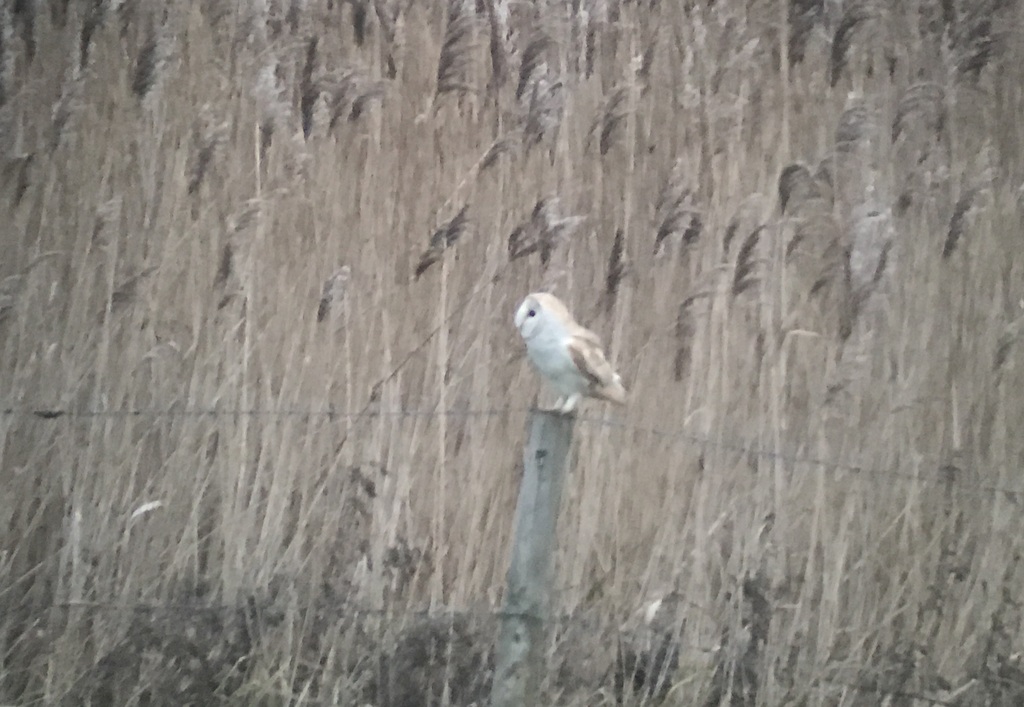
The Barn Owl had been a bit distant from where we were standing, so we walked up along the seawall for a closer look. We could hear Bearded Tits calling from the reeds as we passed. Then a Water Pipit flew up calling from an area of recently cut reed and two Grey Partridge flew across and dropped down in the middle of the same cut area, presumably to feed on any spilled seed. A flock of Curlew flew past us calling, heading inland.
The Barn Owl reappeared again, and was much closer to us now. We watched as it flew round again, staring intently down into the grass. It dropped down at one point, but came up again quickly with no sign of having caught anything, before landing on a nearby post briefly. When it took off again, it flew straight over towards us and made its way right past below the bank, before heading off inland presumably to roost.
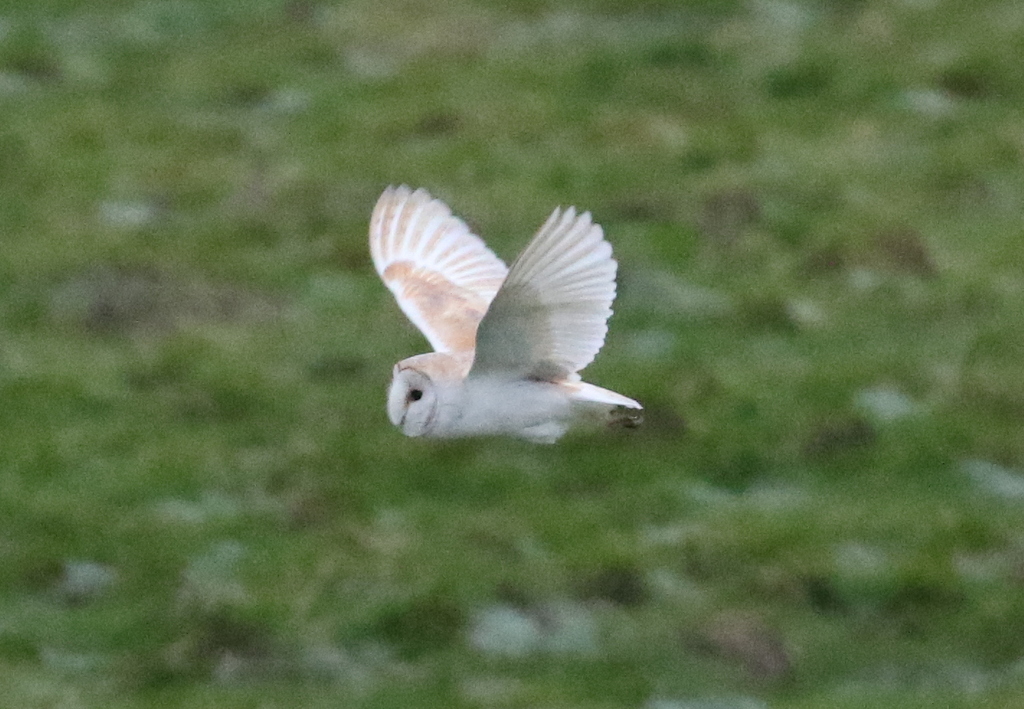
There were other birds here too. One or two Marsh Harriers quartered the reeds and we spotted a Kestrel perched on a telegraph post. Several geese were flying back and forth – including six Brent Geese which came right over our heads, and a couple of skeins of Pink-footed Geese further out over the grass. A Little Egret and a Rock Pipit were both feeding on the pools on the saltmarsh beyond the seawall. Another Barn Owl was only seen as it disappeared into a box to roost, before anyone could get onto it.
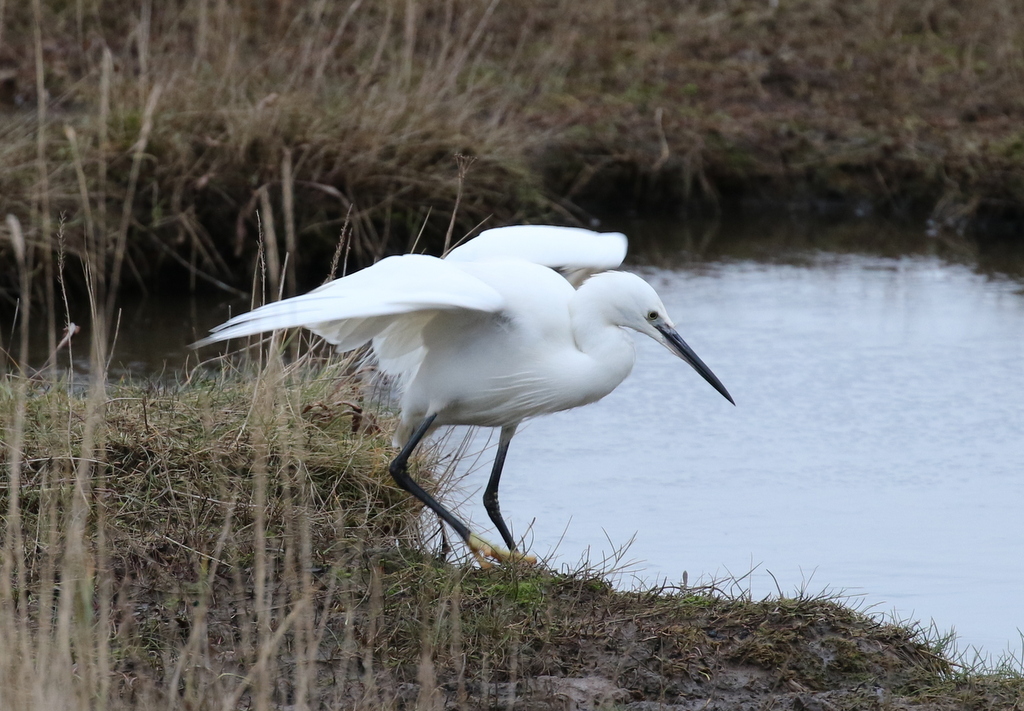
With the Barn Owls here having probably gone to roost now, we walked back to the car. We could hear Grey Partridge calling and looked across to see a pair on the bank in front of us. They then flew down into the grass, where we got a good look at them in the scope.
Some movement in the reeds on the edge of the ditch below us turned out to be a Chiffchaff. Mostly this is just a summer visitor and passage migrant here, but with increasingly mild winters a few stay on. In contract, Cetti’s Warbler is resident. We had heard a couple calling on our walk and, having just explained how it was unusual to see one out in the open, a Cetti’s Warbler flew past us and landed briefly in the top of a clump of brambles!
Our next target for the morning was Little Owl. On our drive inland to look for them, we noticed a white shape flying along the verge beside the road in front of us, another Barn Owl still out hunting. We drove slowly behind it for several minutes, watching it – it seemed oblivious to our presence. It landed briefly on a road sign, then carried on hunting. When it turned down a side road, it flicked over the hedge out of view, working the edge of the field. Then it came back over the hedge further along, crossing the road in front of us and going over the hedge the other side, before flying back the other way, behind us. Great to watch!
We stopped by a set of farm buildings where we know there are Little Owls. There was no obvious sign of them at first – perhaps not a great surprise as they like to perch up in the morning sun and today was cold and cloudy! As we walked round the other side, scanning carefully, we found one tucked in under the roof of an old barn. It was not easy to see from here – we could only see half of it and it was facing the other way – but we could make out its back spotted with white and the false eye pattern on the back of its head.
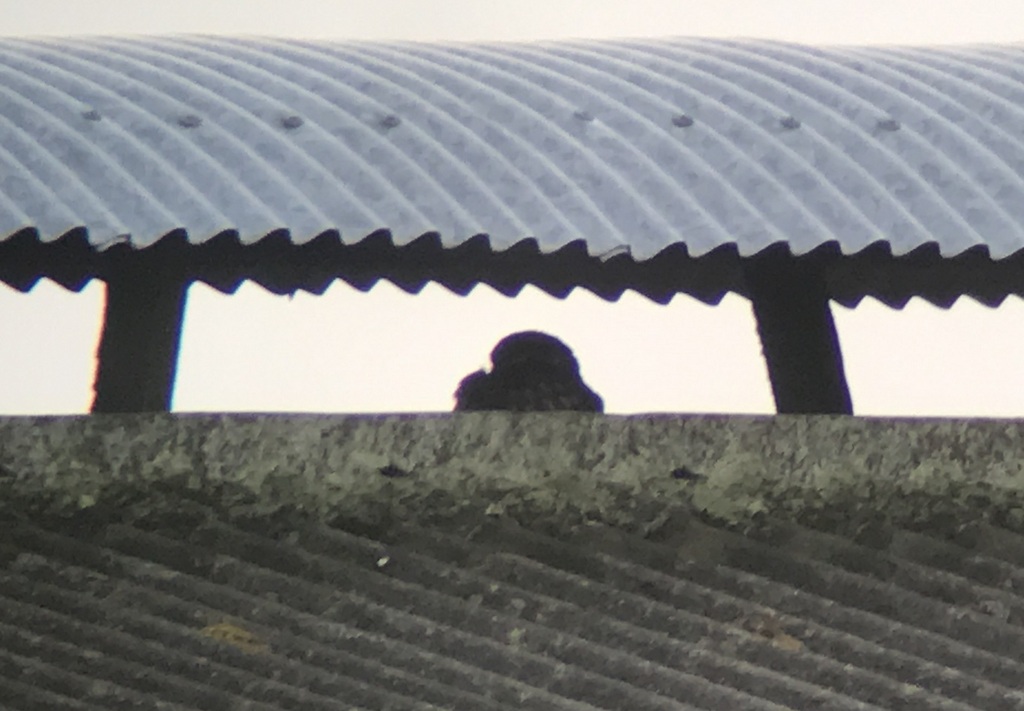
We walked back round to the front of the barns, but the Little Owl had tucked itself in so well it was not visible at all from this side. There were a few other birds here – a few Brent Geese, Common Gulls and Curlew in the fields, and a pair of Stock Doves on the roof of one of the other barns.
The weather looked like it might be brightening a little, so we carried on our way west, hoping we might find another Little Owl elsewhere. However, we hadn’t gone far before it started to spit with rain. We drove past several more sets of occupied barns on our way, but there was no sign of any of the other Little Owls. It was just not the weather now for them to be sitting out, and we weren’t helped by lots of disturbance today too – a farmer with his dog was walking round the buildings at one site, a shoot was gathering outside another. We did see another late Barn Owl still out, perched on a post out in a field, looking slightly bedraggled.
Our next destination was Snettisham. As we got up onto the seawall, a smart drake Goldeneye was diving on the pit below the bank. The tide was out, and we were greeted by a vast expanse of mud stretching across to Lincolnshire in the distance, the Wash. There were a few smaller waders on the near edge, little groups of grey Dunlin and a couple of Ringed Plover too with nearest of them.

There were clearly lots of waders out on the mud in the distance. Further out, we could see a few Grey Plover and Curlew. A tighter group beyond them was a line of Bar-tailed Godwits and Knot, busy feeding. A slick of Golden Plover was spread out across the mud, remarkably hard to see until we got them in the scope. Another flock of Golden Plover whirled round over the fields just inland, before dropping down out of view.
There were ducks out on the Wash too, lots of Teal and Mallard in flocks asleep on the edge of the muddy channels. Shelduck were liberally scattered across the mud. Inland, a big flock of Wigeon flew up calling before dropping back down behind the inner seawall.
There has been a Shorelark here in recent weeks, but we hadn’t heard anything about it for a while. We had a quick walk up along the tideline to see if it was still here and just as it seemed like it might have gone, we noticed some movement in all the seaweed and dry vegetation lined up along the top of the beach. Sure enough, it was the Shorelark. We had great views of it as it crept around in and out of the piles of vegetation, looking for seeds, its pale yellow face with distinctive black bandit mask and collar.
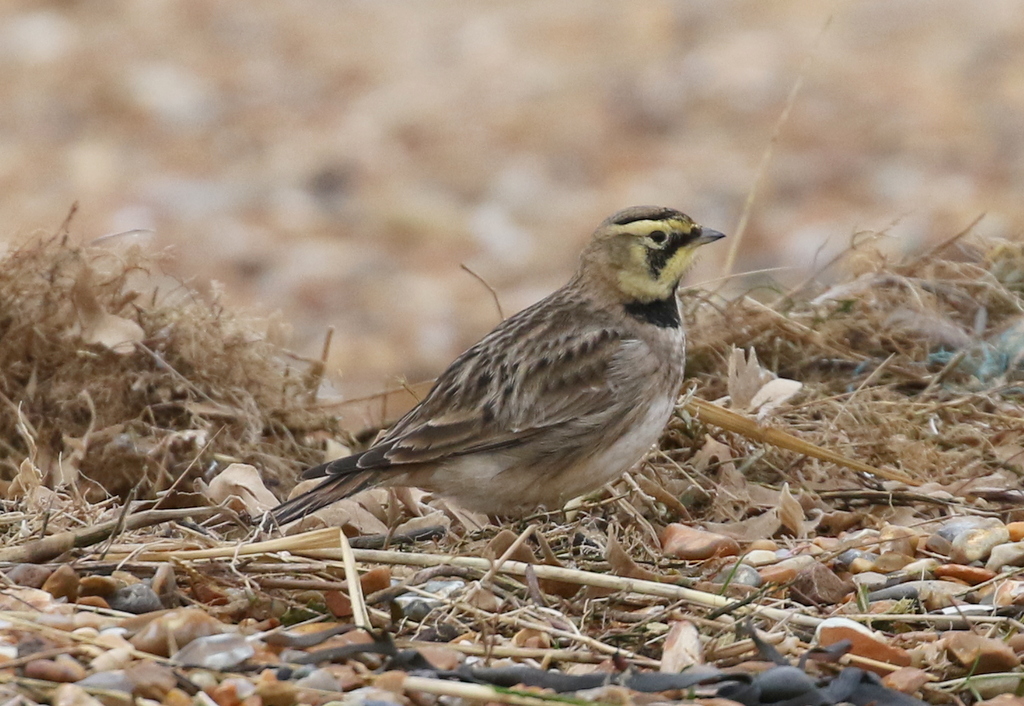
As we made our way back along the track, we caught sight of a smart drake Pintail on the water below the bank. There were more Goldeneye diving out on the pits, and a couple of Little Grebes too. A flock of Tufted Duck flew off past us. On the main pit there were good numbers of Wigeon and a couple of Gadwall too, plus lots of Greylag Geese.
Walking round, we scanned the bushes and spotted a shape under the brambles. It was a Short-eared Owl roosting. We got it in the scope and had a look at it, but it was facing away from us at first. Another scan and we found a second Short-eared Owl in the bushes nearby. This one was looking straight at us.
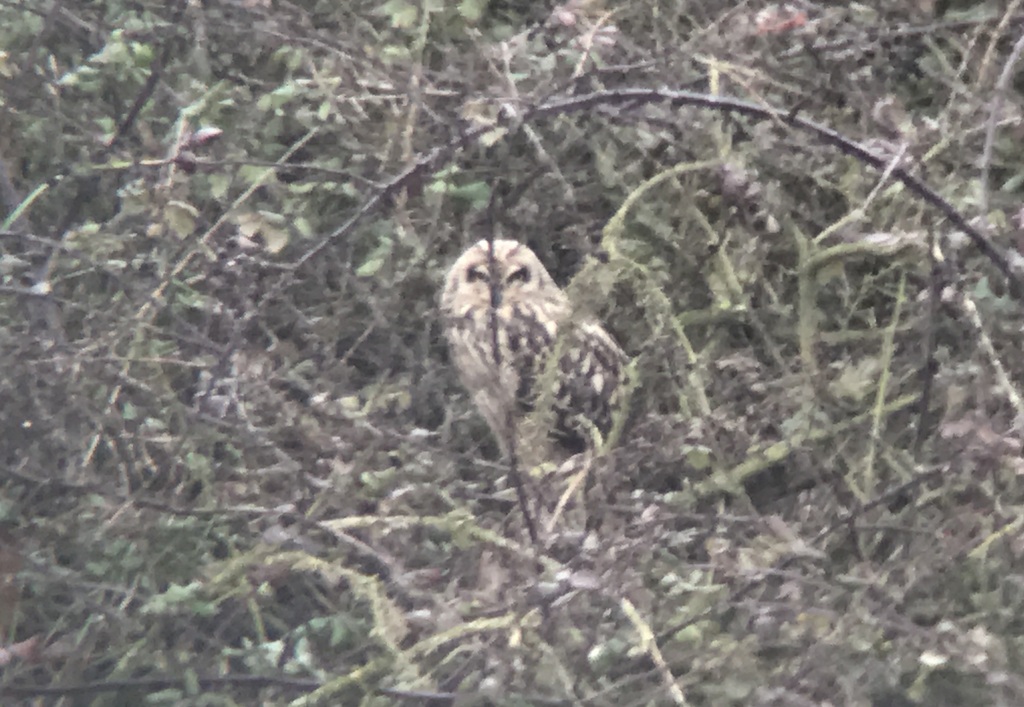
We stood and watched the Short-eared Owls for a few minutes. They were not doing very much, but would occasionally turn their heads. A pair of Brown Hares came chasing through the bushes towards them and ran straight into the brambles where the second Short-eared Owl was perched. We watched as it looking round and down towards them, making sure there wasn’t any threat, before going back to sleep.
After lunch back at the car, we started to make our way back east. We had hoped to have another go at finding another Little Owl on our way back, but having eased off earlier it now started to spit with rain again. Not surprisingly, there was no sign of any more owls still. We did find a big flock of Pink-footed Geese feeding in a recently harvested sugar beet field beside the road and had a quick stop to look at them.
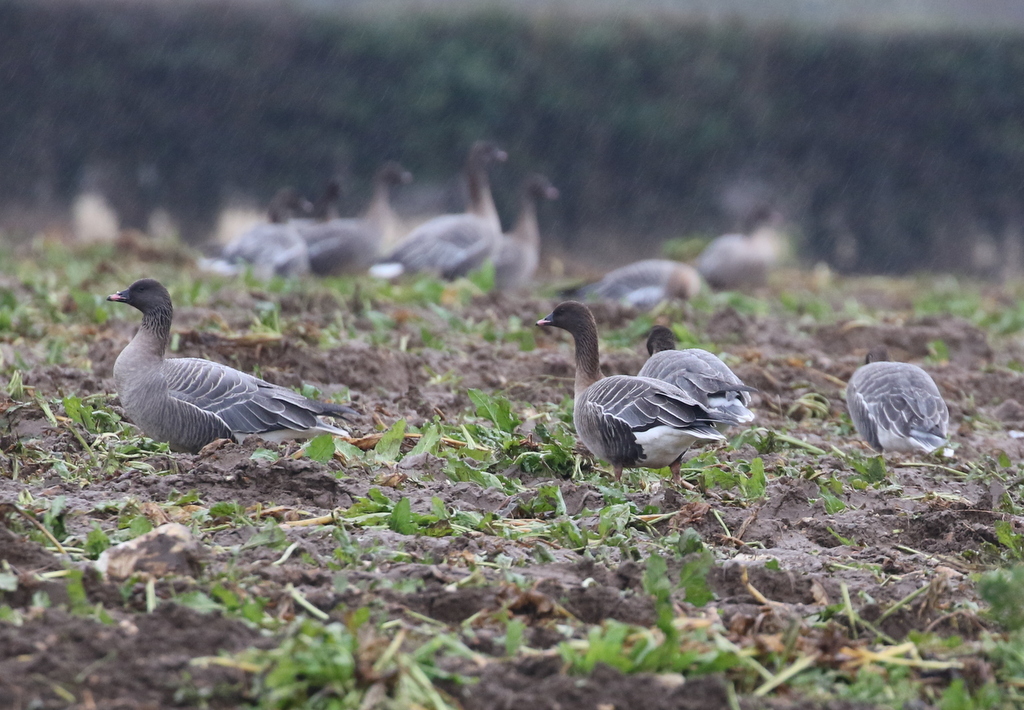
When we got back to the coast, it stopped raining again, so we went back to the grazing marshes to see if any owls were coming out to hunt. As walked out on the seawall, we heard a Water Pipit call and looked down to see it feeding on the edge of a puddle where the reeds had just been cut. This time we had a good look at it through the scope, noting it pale off-white underparts with neat black streaking, and its prominent pale supercilium. A pair of Stonechats was feeding nearby too.
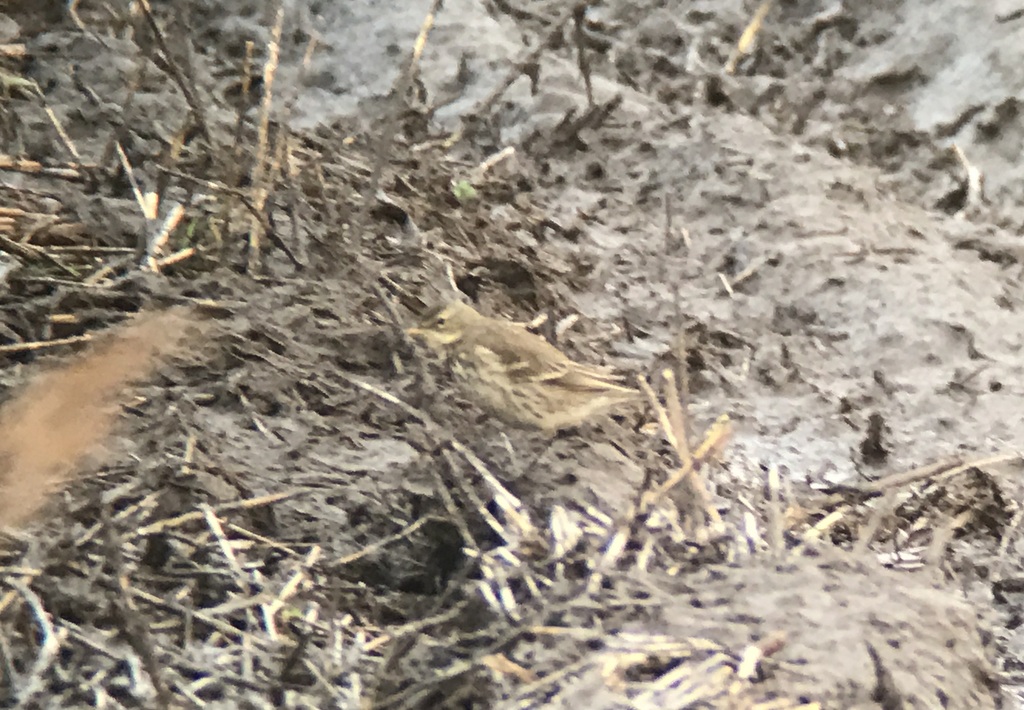
It was getting late now, and the light was starting to fade. We could see a big flock of Brent Geese feeding out on the grass in the distance and watched as they took off and flew across the marshes, heading off to roost.
A Barn Owl appeared behind us. It flew in over the reeds, past us on the bank, and headed out across the grazing marshes. It was a noticeably darker bird than the one we had seen here this morning. It hunted for a minute or so around the edge of the reeds out in the middle, then headed off over the other side.
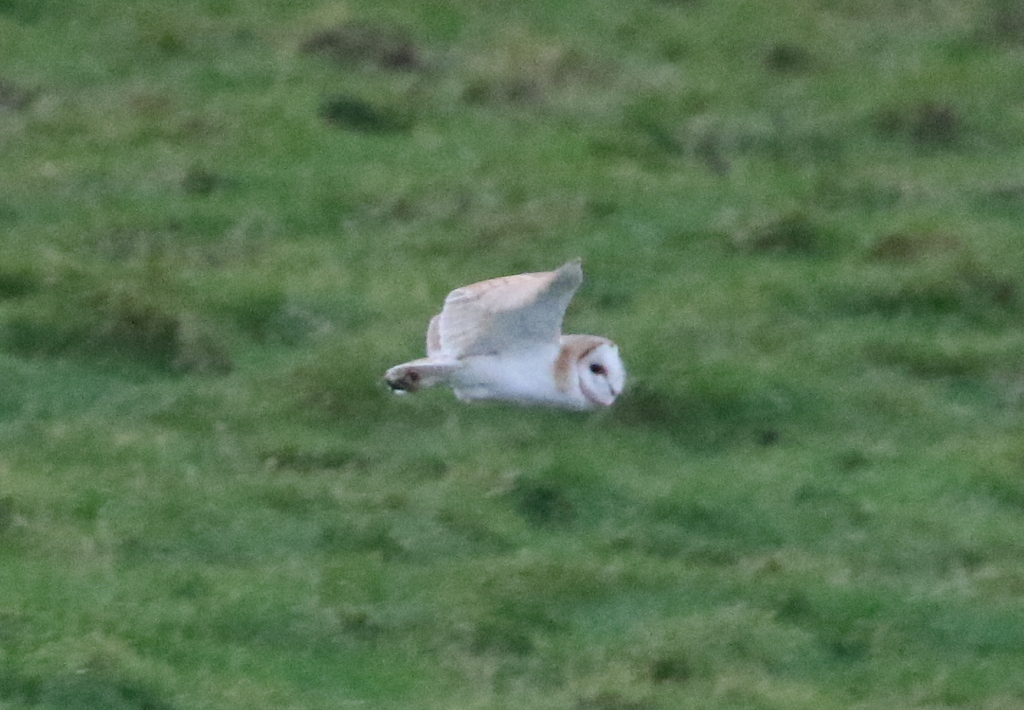
It was getting late now. We already had a good haul of owls for the day, but there was one more still we wanted to try to see, so we headed inland again, and up to the woods. We walked through the trees and stood looking out over the grazing marshes as we waited for the light to fade. As we watched, several ducks flew in and landed down in the pools to feed, Mallard and Gadwall.
Then a Tawny Owl hooted from the trees behind us. We walked back into the wood and it hooted again. We looked over in that direction and saw a large shape fly out, disappearing off through the trees, as the Tawny Owl came out of its roost and headed off for the night.
We walked down along a path to an area where we know another male Tawny Owl favours. We had a short wait, but after a while it finally appeared through trees, and perched high above us. We managed to get it in the scope, silhouetted against the last of the day’s light, and watched it hooting, turning round on the branch, looking down towards us.
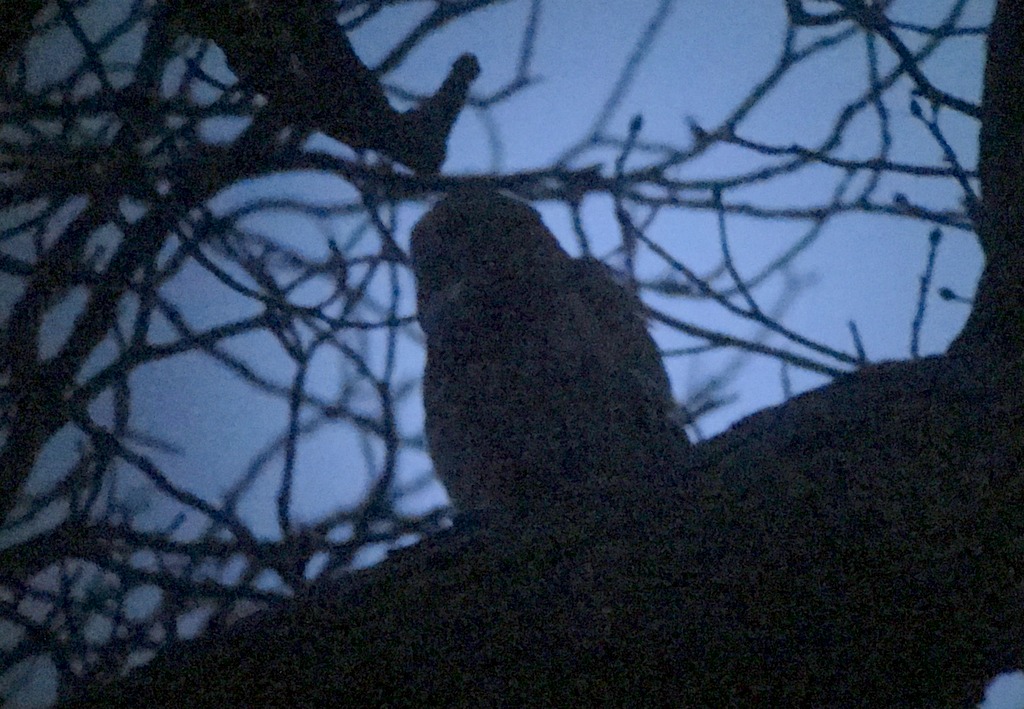
The Tawny Owl stayed in the trees above us for several minutes, hooting on and off, before eventually it took off and disappeared deeper into the wood. We could still hear it, hooting in the distance, as we walked back to the car. It was a great way to end a very successful day out, seeking owls.
















